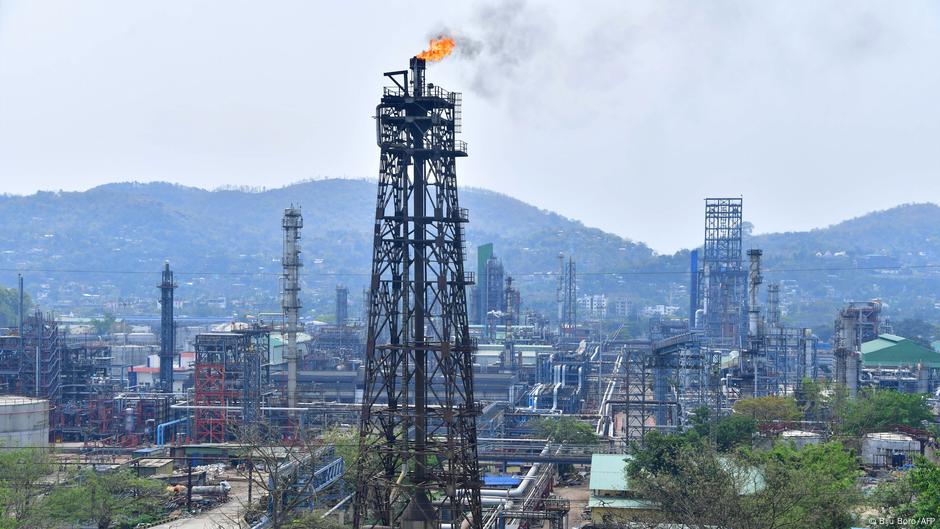US President Donald Trump’s sanctions on Russian oil giants Lukoil and Rosneft are putting pressure on India to .
The measures announced last week mean that Indian oil refineries, and the banks and shipping companies facilitating business with the blacklisted Russian companies, could face secondary sanctions if they don’t wind down transactions by a November 21 cutoff date.
The move comes as the Trump administration in August said it would on a selection of Indian exports to the US over New Delhi’s continued purchases of Russian oil. In September 2025, India bought some 1.6 million barrels per day of Russian crude, data from global trade analytics firm Kpler showed.
Trump has also claimed several times in recent weeks that Indian Prime Minister Narendra Modi told him .
The Indian government has neither confirmed nor denied these claims, other than a Foreign Ministry statement on October 17 underlining India’s goals are “ensuring stable energy prices” and ” and diversifying as appropriate to meet market conditions.”
Signals in India of a Russian crude cut?
Meera Shankar, former Indian ambassador to the US, told DW that it is interesting that the US sanctions have not been imposed on Russian oil per se, but on two large energy companies in Russia.
“The removal of all Russian oil from the global market would push up energy prices and that would not be politically or economically palatable in either the US or Europe,” she said.
“Most Russian oil is being imported by private companies in India and they will take a view based on their assessment of the balance of benefit. The Indian government has offered to step up energy purchases from the US as part of its effort to diversify,” added Shankar.
Indian refining giant Reliance Industries, currently the largest Indian importer of Russian crude and the biggest exporter of refined petroleum products, has signaled it is preparing to cut out purchases from Rosneft, according to several refinery sources speaking under anonymity to Reuters news agency last week.
On the record, a Reliance spokesperson said the refinery is “assessing the implications” of the recent Western restrictions on Russian oil, and emphasized it would be “adapting refinery operations” to meet compliance requirements of “applicable sanctions and regulatory frameworks.”
This includes compliance with new EU guidelines restricting the import of Russia-sourced refined petroleum products.
Reliance added it would be “complying fully” whenever there is “any guidance from the Indian government.”
Trump turns on the pressure
After Russia invaded Ukraine in 2022, India began buying Russian crude oil at a steep discount, making Russia now the largest source of India’s crude oil imports.
Before the Ukraine war, Russian crude oil was only a small part of India’s energy mix, with India’s oil demand mostly sourced from the Middle East.
The cheap Russian oil imports allowed India to save billions, even as the price of Russian crude bought by India has notched higher.
Although Moscow’s war, India’s imports of Russian crude had been implicitly supported by the West as a stabilizing factor in global oil prices, the Trump administration is now adding pressure on Moscow’s coffers.
The US Treasury said the move aims to “degrade the Kremlin’s ability to raise revenue for its war machine.”
The choice for India is now whether Russian oil is worth the risk of secondary sanctions, and scuttling a potential trade deal with the US.
“India has no choice but to give in to US sanctions because it risks secondary sanctions on our banks and companies in the energy sector,” Arun Kumar, a former professor of economics at Delhi’s Jawaharlal Nehru University, told DW, adding that India in the past has complied with US demands that it give up Iranian and Venezuelan oil imports.
Where are India’s other sources?
Lekha Chakraborty, professor and chair at the Delhi-based National Institute of Public Finance and Policy, told DW that Indian refiners like Reliance are already pivoting and bringing in more Middle Eastern supplies to replace lost Russian crude.
“We are already seeing a surge in purchases from Iraq’s Basra medium crude oil, which now accounts for nearly 20% of India’s oil imports, alongside a combined 22% from Saudi Arabia and the UAE,” she added.
“This strategic realignment will help maintain supply, but it comes at a cost — higher fuel prices could put a lid on India’s targeted 7% growth and squeeze margins across manufacturing and transport,” she said.
“India’s economic momentum is likely to be dampened in the short term, as global headwinds intensify. The shift away from discounted Russian barrels is not ideal for growth, but these disruptions are temporary and India is positioned to adapt quickly,” she said.
However, Chakraborty emphasized that with $700 billion (€602 billion) in foreign exchange reserves, a rapidly diversifying trade portfolio, and active talks to with Washington, India retains significant economic resilience.
“By quickly realigning oil trade, negotiating reciprocal tariffs, and deepening regional partnerships, India is minimizing the risk of geopolitical isolation and demonstrating an ability to withstand shocks, even as global alliances are tested,” she added.
India’s strategic autonomy
Ajay Bisaria a former Indian diplomat, and now a corporate advisor on geopolitics, told DW that India is playing the long game with energy policy, and wants to preserve the maximum level of flexibility.
“India’s approach to energy is rooted in strategic autonomy, always aiming to secure the most affordable oil for its consumers,” he said.
“Ideally, India would like a global market where energy sources are interchangeable, but geopolitical realities and unpredictable shifts in US policy, now complicate this landscape,” he said.
“While India is not ruling out buying Russian oil in the medium term, the new US sanctions have created significant hurdles for Indian companies operating in this space. Still, the government avoids explicitly ordering firms to halt Russian imports, preserving both flexibility and leverage,” he added.
With negotiations ongoing on an India-US trade agreement, halting Russian oil imports offers diplomatic breathing room while preserving India’s flexibility to restore Russian flows when conditions ease.
“When sanctions are lifted, business as usual resumes. , but not force, India’s choices,” said Bisaria.
Indian analysts speaking to the Times of India newspaper, said they expect a near-term dip in imports of Russian crude, but expect refineries to continue sourcing Russian oil through unsanctioned third-party intermediaries.
However, it currently remains unclear when and at what scale this would play out, and whether the US could also target this alternative route.
Edited by: Wesley Rahn
The post Is India finally preparing to give up Russian oil? appeared first on Deutsche Welle.




